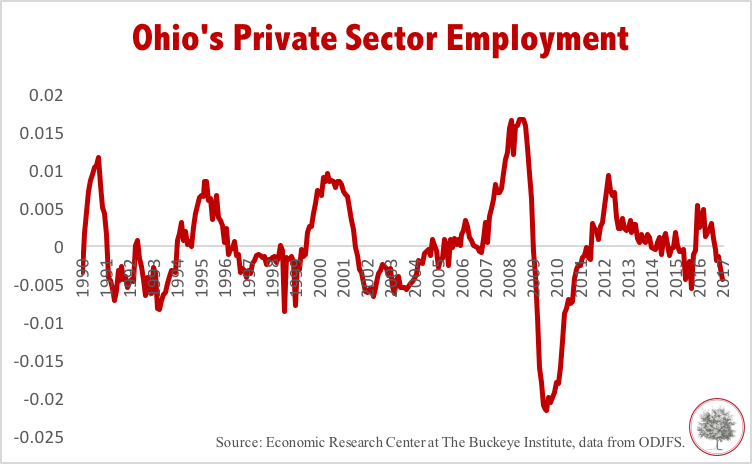New Year, New U.S. President and Ohio's Cool-Down Continues
Mar 07, 2017
Monthly Deviations from Trend Employment from January 1990 - January 2017
“History does not repeat itself, but it does rhyme.” – Mark Twain
On March 3rd, 2017, Ohio’s Department of Job and Family Services released the Nonagricultural Wage and Salary Employment Estimates for January 2017.
Happy New Year! Happy New Year!
Let’s start with the good news: it wasn’t the worst start for a January since the end of the Great Recession. Although Ohio lost 2,100 jobs in January 2017, it was a better start than the 10,100 jobs that the state lost in January 2016.
Now the bad news: the Ohio economy cooled considerably. That’s 33,300 fewer new private sector jobs and 10,000 fewer new government jobs compared to the previous 12-month period employment gains!
What about the natural periodic fluctuations in economic activity? It turns out Ohio is 0.4% below normal or “trend” employment.
Trend employment is defined as the monthly rate of payroll job gains required to hold the employment growth at its long-run average growth rate. Employment growth above trend will tend to pull the unemployment rate down, while employment growth below trend will tend to pull the unemployment rate up. As such, it can be thought of as a “breakeven” rate of job growth. Job growth typically exceeds trend during economic expansions and drops below it during slowdowns.
For the sixth consecutive month, Ohio’s employment growth has fallen short of expectations. Ohio needs good policy now - before it’s too late – to retain some of the employment gains made since the end of the last recession.
